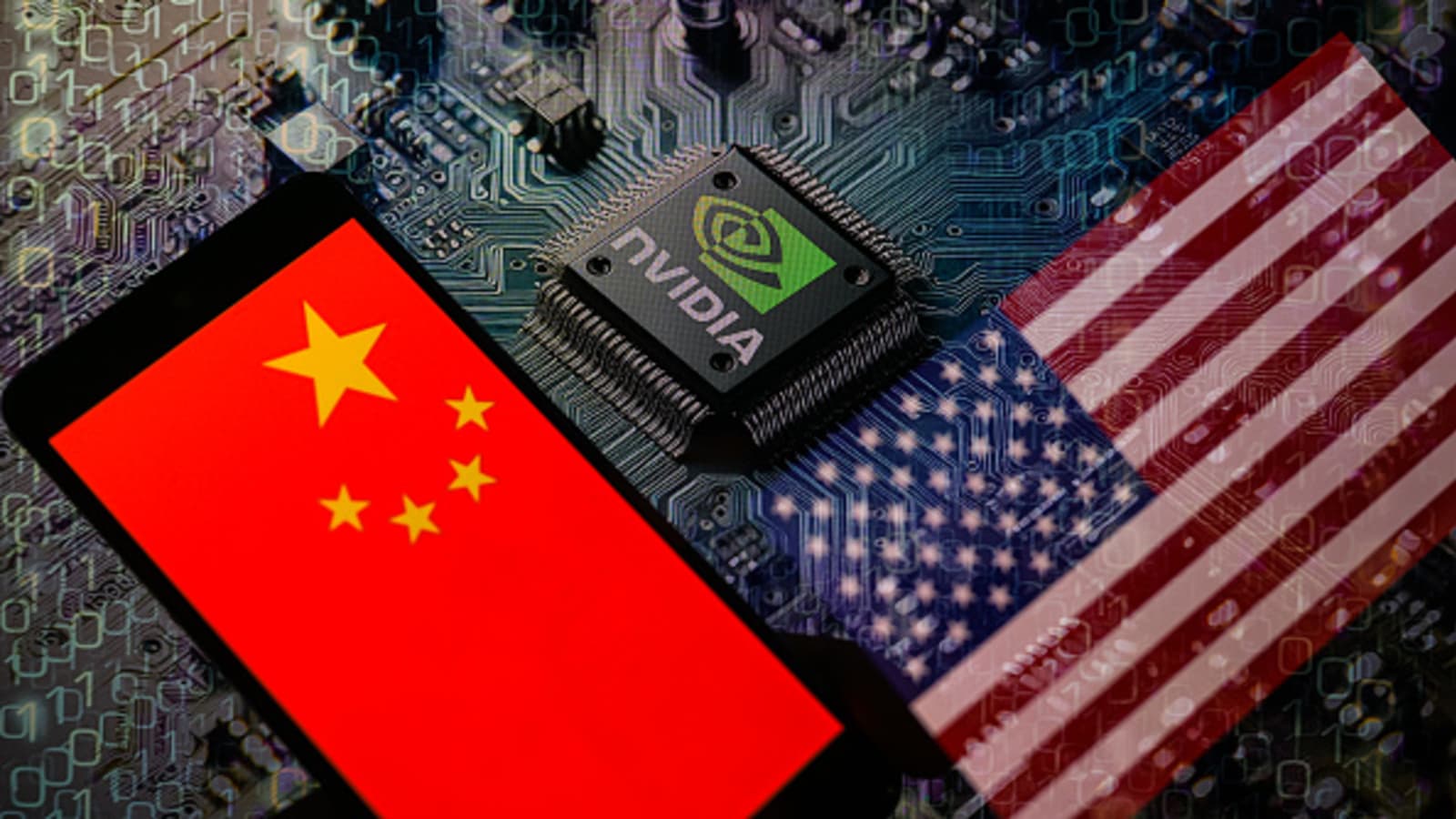The semiconductor industry is at the center of a growing geopolitical and economic battle between the United States and China. In a significant development, Nvidia, the world’s leading AI and graphics chipmaker, has warned that it could face a $5.5 billion charge due to tightened U.S. restrictions on advanced chip exports to China. This move underscores the escalating tensions in the global tech supply chain and highlights the challenges faced by semiconductor companies navigating complex trade regulations.
Background: US-China Chip War
The U.S. government has been progressively tightening controls on semiconductor exports to China, citing national security concerns. The Biden administration fears that advanced AI and high-performance computing (HPC) chips could be used by China’s military, giving it an edge in artificial intelligence, cyber warfare, and next-generation weapons development.
In October 2022, the U.S. Commerce Department’s Bureau of Industry and Security (BIS) imposed sweeping restrictions on semiconductor sales to China, targeting Nvidia’s A100 and H100 GPUs, which are critical for AI training. Nvidia responded by creating export-compliant versions (A800 and H800) for the Chinese market, but in October 2023, the U.S. further tightened rules, closing loopholes and effectively banning even these downgraded chips.
Nvidia’s $5.5 Billion Hit
In its latest SEC filing, Nvidia disclosed that the expanded U.S. restrictions could impact $5.5 billion in sales to China in the fourth quarter of 2024. This represents a significant portion of Nvidia’s revenue, given that China accounted for about 20-25% of its data center sales in recent quarters.
Key Financial Implications:
- Revenue Loss: The $5.5 billion charge reflects potential lost sales from Chinese cloud providers, AI startups, and tech giants like Alibaba, Tencent, and Baidu.
- Stock Market Reaction: Nvidia’s shares dipped following the announcement, though the company remains a dominant force in AI chips globally.
- Long-Term Impact: If restrictions persist, Nvidia may need to accelerate efforts to diversify its markets, investing more in regions like the Middle East, Southeast Asia, and Europe.
China’s Response: Self-Sufficiency Push
China has been aggressively investing in domestic semiconductor capabilities to reduce reliance on U.S. technology. Companies like Huawei and SMIC (Semiconductor Manufacturing International Corp) have made breakthroughs, including Huawei’s Ascend AI chips and SMIC’s 7nm process technology (despite U.S. sanctions).
However, China still lags in producing cutting-edge AI GPUs comparable to Nvidia’s. While Chinese firms are developing alternatives (e.g., Biren Tech’s BR100), they lack the software ecosystem (CUDA) that makes Nvidia’s chips indispensable for AI workloads.
Global Semiconductor Industry Impact
The U.S.-China chip war is reshaping the global tech landscape:
- Other Chipmakers Affected: AMD and Intel also face restrictions, but Nvidia is the most exposed due to its AI dominance.
- Supply Chain Shifts: Companies are relocating production to “friend-shoring” hubs like Vietnam, India, and Malaysia to bypass sanctions.
- AI Race Consequences: If China is cut off from advanced AI chips, its progress in generative AI (competing with OpenAI and Google) could slow, while U.S. firms retain an edge.
Nvidia’s Mitigation Strategies
To counter revenue losses, Nvidia is pursuing several strategies:
- Expanding in Other Markets: Boosting sales in Europe, Japan, and the Middle East, where AI demand is rising.
- Custom Chips for China: Developing new export-compliant chips that meet U.S. rules but still cater to Chinese clients.
- Lobbying for Exemptions: Engaging with U.S. policymakers to ease restrictions on certain commercial AI sales.
Conclusion: A Fragmented Future for Tech?
The U.S.-China semiconductor conflict shows no signs of easing, forcing companies like Nvidia to navigate an increasingly fractured global market. While the $5.5 billion charge is a major setback, Nvidia’s technological lead in AI ensures it remains a critical player. However, the long-term risk is a bifurcated tech ecosystem, where China and the U.S. develop parallel supply chains—reducing efficiency but increasing geopolitical resilience.
For investors and tech firms, the key takeaway is clear: geopolitics is now as important as innovation in the semiconductor industry. Companies must adapt quickly or risk being sidelined in this high-stakes battle for technological supremacy.
Key Takeaways:
- Nvidia faces a $5.5 billion revenue loss due to U.S. chip export bans to China.
- The restrictions aim to curb China’s AI and military advancements but hurt U.S. firms’ profits.
- China is accelerating domestic chip production but still depends on foreign tech.
- The global semiconductor industry is splitting into competing U.S. and Chinese supply chains.
- Nvidia is diversifying into other markets while lobbying for regulatory flexibility.



